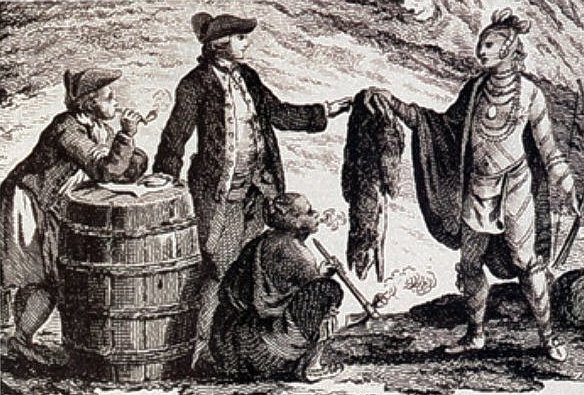This is a tale of how people tried to understand nasty parts of their nature and how they shed more light on the human condition while doing so.
Addiction has been a part of human beings ever since the humans started walking on the Earth. Since the earliest farmers noticed that fermented fruit gave unexpected but pleasant results, there has been a danger of overdoing it. Over the centuries, humankind has developed many addictions, but also, tried many ways to rehabilitate those who have fallen to drinking alcohol, drugs or something else.
 The roots of rehab
The roots of rehab
 Native Americans knew about alcohol, but they only used it for ceremonial purposes. They got the idea of drinking recreationally from European colonists. These tribes had no structures to control alcohol intake or the effects it had. Therefore, colonists used this addiction as a tool of war and traded alcohol for vital resources. Finally, when the tribes” leaders understood alcoholism, they encouraged their addicted tribe members to go back to the old ways of living. They made “sobriety circles” around the year 1750, and this was the first organized rehabilitation in America.
Native Americans knew about alcohol, but they only used it for ceremonial purposes. They got the idea of drinking recreationally from European colonists. These tribes had no structures to control alcohol intake or the effects it had. Therefore, colonists used this addiction as a tool of war and traded alcohol for vital resources. Finally, when the tribes” leaders understood alcoholism, they encouraged their addicted tribe members to go back to the old ways of living. They made “sobriety circles” around the year 1750, and this was the first organized rehabilitation in America.
 Change of views
Change of views
In the middle ages, and even later, addiction was considered a moral failure, and it was thought to be a matter of choice for the drinker. Thus, the treatment was in line with that. Treatment included: imprisonment, religious interventions involving prayer, and sentencing to a mental asylum.
A man called Benjamin Rush changed all that. He advanced the idea that alcoholism is a medical condition, a chronic disease. Moreover, he championed for alcoholics to get proper treatment and to be weaned off substances they consumed instead of being imprisoned and tormented in asylums.
 First rehabilitation institutions
First rehabilitation institutions
Benjamin Rush’s ideas met approval, so the Sober Houses were made. These were specialized hospitals for treatment of alcoholics, placed in order to help them reenter society.
The New York State Inebriate Asylum was established in 1864. Only three years later, in Chicago, the Martha Washington Home was founded to help rehabilitate women.
 Some crazy ideas also appeared
Some crazy ideas also appeared
Temperance organizations and societies also brought out well-meaning and well-educated people who had very unorthodox ideas for treating alcoholism. One example was Dr. Leslie Keeley who promised he could cure addictions with a secret formula. In 1879, it might have sounded like a good idea. He said his formula had to be injected four times a day, and that it contained gold. Unfortunately, his “formula” actually contained cocoa, arsenic, and morphine. Although he claimed that it worked, the families of his patients complained of insanity, relapse and even death.
 AA
AA
 Alcoholics anonymous were founded in 1935 by Bill Wilson and Dr. Bob Smith. These two men devised the 12 steps of AA, a series of principles that used moral and spiritual development to offer addicts emotional, societal and mental rehabilitation. Although this organization came under severe criticism over the years, it remains one of the key elements in recovery from alcohol abuse.
Alcoholics anonymous were founded in 1935 by Bill Wilson and Dr. Bob Smith. These two men devised the 12 steps of AA, a series of principles that used moral and spiritual development to offer addicts emotional, societal and mental rehabilitation. Although this organization came under severe criticism over the years, it remains one of the key elements in recovery from alcohol abuse.
They have even created support groups for many other addictions – gambling, overeating, narcotics, and others.
 Then came the National Committee for Education on Alcoholism
Then came the National Committee for Education on Alcoholism
Marty Mann, one of the early members of AA who achieved sobriety thanks to this organization, was inspired to battle the still-existing stigma that alcoholics were moral failures, and that alcoholism was not a medical condition. Therefore, she helped in the launch of the National Committee, which advocated pretty radical notions about alcoholics and alcoholism.
“Alcoholism is a disease. Alcoholics are, therefore, sick people.[They] can be cured. Alcoholics deserve to be cured. Alcoholism is the fourth most widespread health problem in America, and deserved public action.”
This committee still exists today, and they still battle the stigma on addictions.
And the rest is history…
After the base was put in place, there was a more or less open road for rehabilitation of addicts. But, when we come to think of those people who had to battle their addictions in the conditions that existed 300 years ago, we shudder with terror. Today, there are rehabilitation centers that are more like spas. In fact, pharmacology and psychotherapy are a part of the treatment. The society is also aware that if you fail, it does not mean you are worthless as a person. Rather, it means you need some help to get back on your feet.



